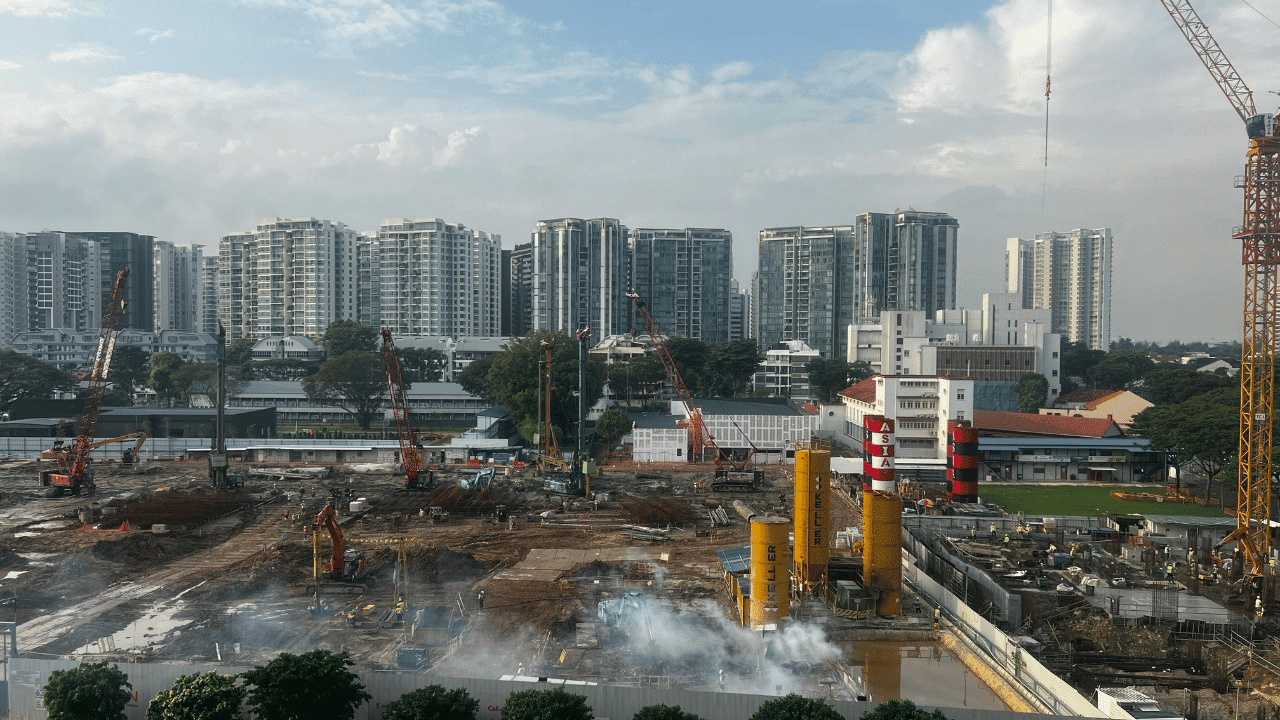8 MS4 Phase II Duties for Managing Construction Stormwater
Managing construction site stormwater runoff is crucial for Municipal Separate Storm Sewer Systems (MS4s) under Phase II regulations.
These duties ensure compliance with environmental standards and protect our water resources. This blog outlines eight essential responsibilities for MS4 Phase II management.
For additional resources on stormwater management, check out our MS4 municipal services and affordable tools for MS4 inspections.
Managing and Tracking Active NOI CGP Permits
A key responsibility for MS4 Phase II compliance is managing and tracking Notices of Intent (NOIs) for the Construction General Permit (CGP). This involves several detailed tasks:
- Tracking New NOIs: Ensuring that all new NOIs are accurately recorded as soon as they are filed. This includes maintaining an up-to-date database of all active permits.
- Confirming Notices of Termination (NOTs): Verifying that construction projects have met all necessary conditions before an NOT is issued. This step confirms that the site no longer poses a risk of stormwater pollution.
- Assisting in Closure: Helping to close open NOIs after construction is completed. This involves ensuring that all final inspections and documentation are in order.
Effective tracking and management of these permits ensure that all regulatory requirements are met and help prevent potential compliance issues down the line.
Onsite Start-Up Pre-Construction Meetings
Pre-construction meetings are vital for setting the stage for successful stormwater management. These meetings involve multiple critical steps.
Documenting communications with owners and operators about stormwater regulations is essential to keep all parties informed and accountable.
Additionally, onsite reviews of Stormwater Pollution Prevention Plans (SWPPP) and Best Management Practices (BMPs) are conducted to identify and address potential issues before construction begins.
Reviewing construction schedules ensures that timelines align with stormwater management plans, helping to coordinate efforts and avoid conflicts.
Discussing inspection requirements clarifies the frequency and scope of inspections required during construction and identifies who will be responsible for conducting these inspections.
Addressing other relevant issues resolves any additional concerns or questions that may arise, ensuring that all aspects of stormwater management are considered.
Monthly Inspections
Regular inspections are crucial for maintaining compliance. Monthly inspections should cover several key areas:
- CGP, Disturbance, Common Plan, etc. Permits: Ensuring compliance with Construction General Permits and other permits such as Common Plan of Development permits where applicable. This involves checking that all BMPs are properly implemented and functioning as intended.
- Non-Incorporated Stormwater Activity Permits: Inspecting activities not covered under the NPDES Permit program NOI. This ensures that even smaller projects comply with stormwater regulations.
Consistent inspections help identify and address potential issues before they become significant problems.
This proactive approach helps maintain ongoing compliance and protects water quality.
Bi-Weekly Inspections for High Priority Sites
High priority sites may require more frequent inspections to ensure ongoing compliance. This often involves conducting bi-weekly inspections for high priority CGP and Common Development permit sites where applicable and tracking rain events to follow up on any issues.
Rain events can significantly impact stormwater runoff, so it’s crucial to assess their effects and adjust BMPs accordingly.
Frequent inspections and monitoring ensure that high priority sites remain compliant and that any issues are promptly addressed, reducing the risk of stormwater pollution and enhancing overall site management.
Final Inspections Approving a Notice of Termination (NOT)
Final inspections are necessary to confirm that all work complies with stormwater management regulations before terminating the permit.
This process includes using a checklist to ensure all items are completed, potentially communicating with State Departments of Environmental Quality, and performing a final onsite inspection.
These steps ensure that all regulatory requirements are met before closing out the permit. This final verification helps to ensure long-term compliance and environmental protection.
Permit Enforcement
Enforcement is a critical component of MS4 Phase II responsibilities. This includes issuing verbal and written warnings for non-compliance, implementing stop work orders when necessary, coordinating with code enforcement for citations, and working with State Departments of Environmental Quality regarding penalties for violations.
Effective enforcement ensures that all construction activities adhere to stormwater management regulations, protecting water quality and maintaining regulatory compliance.
Annual Reporting
Annual reporting is essential for documenting compliance efforts. Understanding the annual reporting requirements for MS4 Phase II and implementing processes to gather and compile necessary data are crucial. Accurate and timely reporting demonstrates compliance and helps identify areas for improvement.
This proactive approach helps to maintain ongoing compliance and enhance stormwater management efforts. For more detailed insights on MS4 compliance and reporting, refer to our MS4 permit training guide.
Document and Communication Retention
Proper retention of documents and communications is crucial for maintaining a comprehensive compliance record. This involves:
- Understanding the Importance: Recognizing the significance of retaining all relevant documents and communications. This ensures that all necessary records are available for review and compliance verification.
- Implementing Best Practices: Establishing best practices for document and communication retention. This includes creating a system for organizing and storing records in a way that is easily accessible.
These practices ensure that all necessary records are available for review and compliance verification. This helps to maintain ongoing compliance and enhance overall stormwater management efforts.
Ensuring Effective Stormwater Management for Compliance and Protection
Effective stormwater management is essential for compliance and environmental protection. By adhering to these eight responsibilities, MS4 Phase II entities can ensure that construction activities comply with regulatory requirements and protect our water resources.
For more information on affordable tools to help with stormwater inspections, visit our municipal services page.
For details on pricing and additional services, check our pricing page and explore the tools for MS4 stormwater inspections.
Discover why MS4s choose ComplianceGo and explore our strategies for stormwater program funding and MS4 funding strategies.

